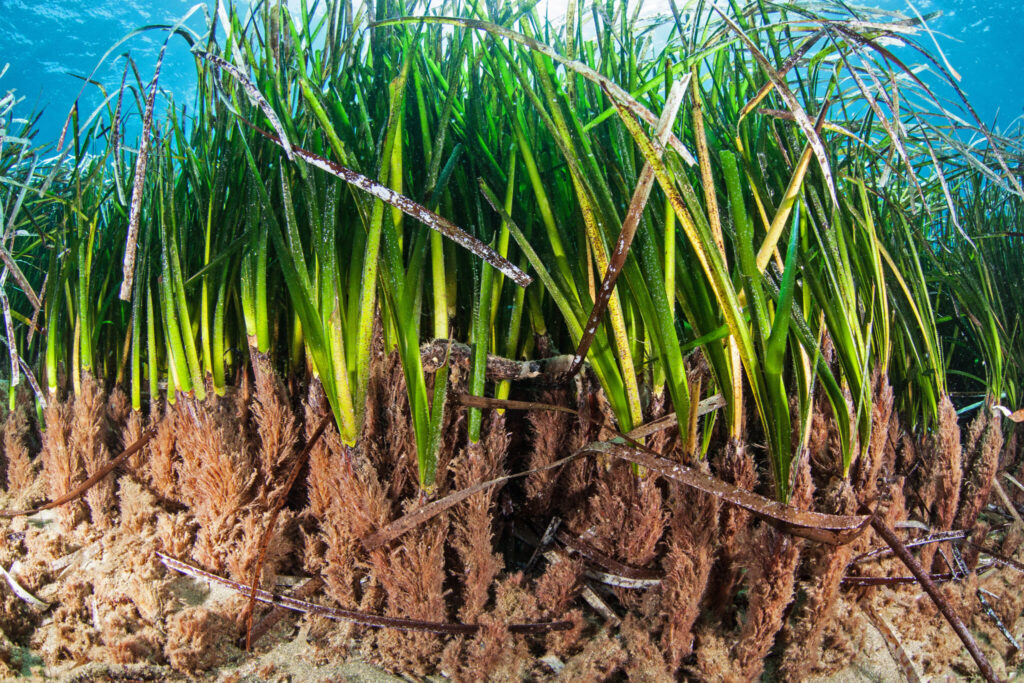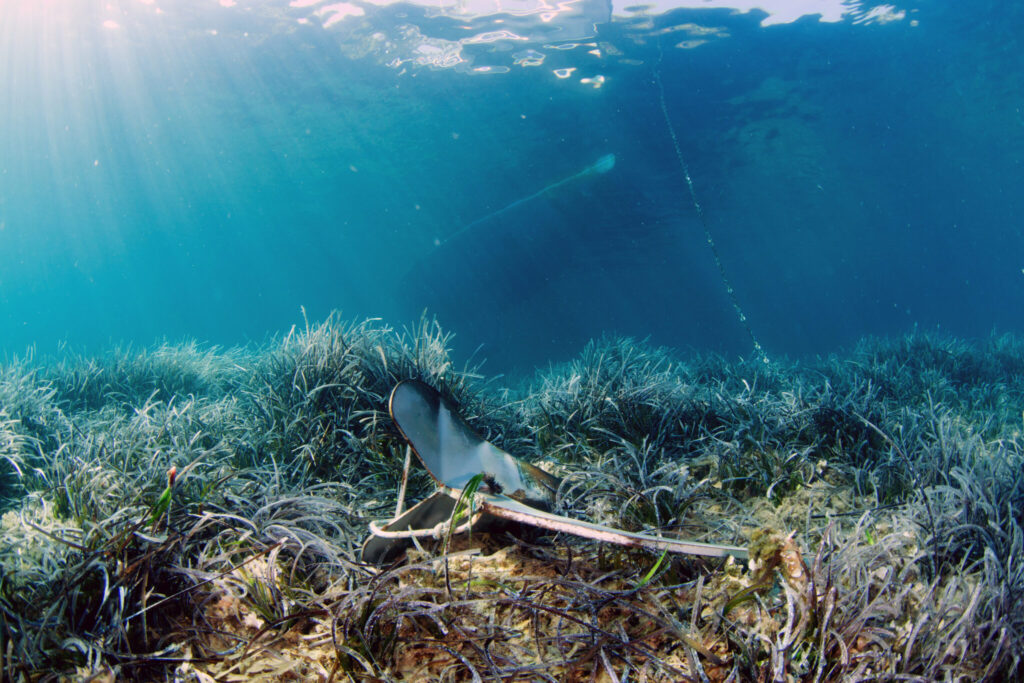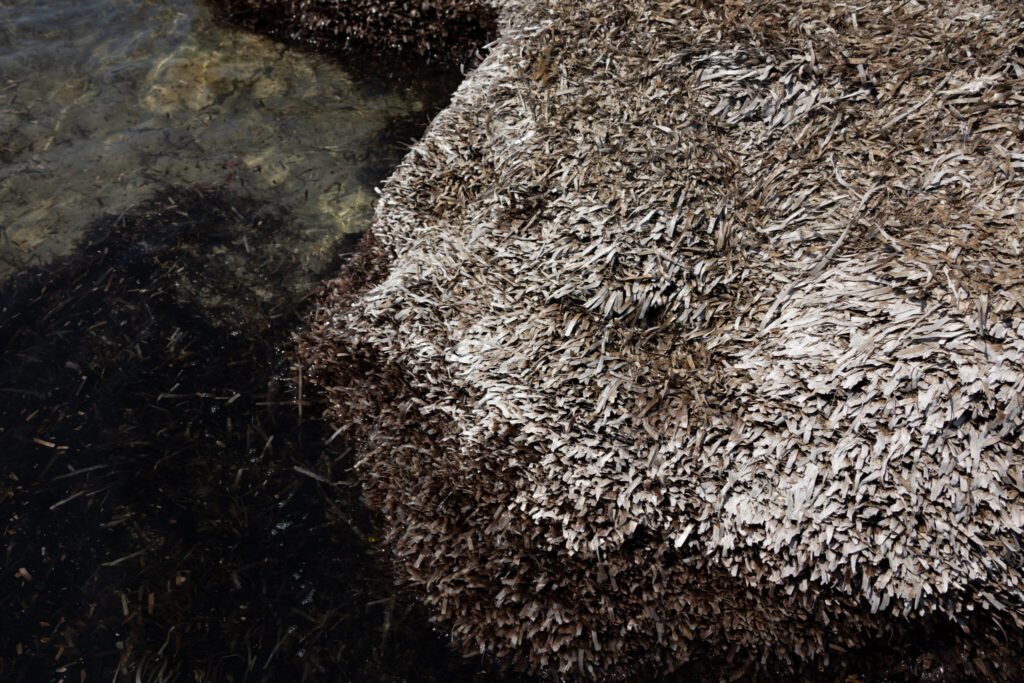Posidonia oceanica is a marine flowering plant endemic to the Mediterranean Sea and one of the most important species for the health of the Adriatic. Often mistaken for seaweed, this unique seagrass forms dense underwater meadows that provide food, shelter, and nursery grounds for a wide variety of marine life—from juvenile fish and mollusks to seahorses and sea turtles.

These underwater meadows play a vital role in the marine ecosystem. They stabilize the seafloor, reduce coastal erosion, filter the water, and are among the most effective natural carbon sinks in the ocean. One square meter of healthy Posidonia can produce up to 14 liters of oxygen per day, making it a true “lung of the sea.”
Posidonia spreads slowly through both seeds and creeping rhizomes. Some meadows are known to be thousands of years old, with individual clones documented to be among the oldest living organisms in the world.
Unfortunately, Posidonia oceanica meadows are highly sensitive to human impacts. Anchoring, coastal development, pollution, bottom trawling, and climate change are all contributing to their decline. Because recovery is extremely slow—sometimes taking centuries—the loss of a meadow can be effectively permanent.

Even after parts of the plant wash ashore, its ecological role continues. The dried leaves form “banquettes” along the beach, helping to prevent erosion and offering shelter for insects, birds, and other coastal organisms. Though often removed for aesthetic reasons, these natural deposits are essential to the health of both marine and coastal environments.

The conservation of Posidonia oceanica is critical to protecting biodiversity, maintaining water quality, and ensuring the long-term resilience of the Adriatic Sea. Through education and community engagement, Blue World Institute supports efforts to protect and restore these vital habitats.
Quick Facts
• Scientific name: Posidonia oceanica
• Habitat: Coastal waters of the Mediterranean Sea
• Depth range: From 0.5 to 40 meters
• Lifespan: Meadows can persist for thousands of years
• Status: Protected under EU Habitat Directive and Barcelona Convention

